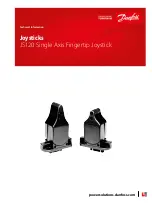
57
The Z21-Booster
You require a booster if the system often switches off without the occurrence of a short circuit, i.e. no lo-
comotive or carriages have derailed and there are no faults in the wiring. In this case, there is an overload
due to too many consumers (locomotives, illuminated carriages etc.). The booster connects an additional
switching power supply 10851 provides more energy and thus clears the overload.
Do not connect the Z21 booster and the Z21 or two boosters to the same switching power supply. Each
of these devices requires its own power supply.
Connecting one or more boosters 10805,10806 or 10807
Divide up the system into separate supply sections so that the number of consumers in each supply section
is as evenly distributed as possible. You calculate the power consumption in a section as follows:
▪
Stationary locomotives with light, approximately 100 mA
▪
Travelling locomotives from approximately 300 to 600 mA depending on size and load
▪
Illuminated carriages, approximately 30 mA depending on the bulb
▪
Digital coupling or smoke generator, approximately 100 mA
If the power consumption exceeds 2.5 A, the section will be overloaded and will need to be divided up. You
must also make sure there are large tolerances in the current consumption, especially for light bulbs. Use
the 42624 digital turnout drive or connect another turnout decoder directly to the drive circuit. You will
then have to calculate approximately 500 mA reserve for the switching current of the turnout.
The division of the track into booster sections in order to ensure reliable commands for travel mode or in
order to switch points is irrelevant if the system is receiving an adequate power supply.
Switch the system off when installing the booster. Divide the system into supply sections. Electrically sepa-
rate the tracks from one another at suitable positions (on both sides). Complete this task by using either
the ROCO isolating rail joiners 42611 or 61192 or separating tracks or by cutting open the track profiles.
Install a connection track piece (e.g. supply element 61190) into the new supply section and connect it to
the "Track Out" bush on the booster. Connect the booster with its transformer. Now connect the booster
to the Z21 using the enclosed special cable by inserting it into the "B-BUS" bush on the Z21 and into the
"B-BUS" bush on the booster. The complete wiring plan is illustrated in Fig. 3 on Page 4.
If necessary, you can connect further boosters to the "B-BUS" bush on the booster.
Make sure that the tracks have the same polarity at the change-over turnout so that short circuits are
not caused when a train passes over the separating turnout. If a short circuit occurs, turn the power
track plug 180°.
It is imperative that you make sure that the power track does not contain any capacitors.
8051281925.indd 57
10.05.2016 12:52:19
Содержание MultiMAUS
Страница 63: ...63 8051281925 indd 63 10 05 2016 12 52 19 ...
Страница 95: ...95 8051281925 indd 95 10 05 2016 12 52 24 ...
Страница 126: ...126 126 8051281925 indd 126 10 05 2016 12 52 29 ...
Страница 127: ...127 8051281925 indd 127 10 05 2016 12 52 29 ...
















































